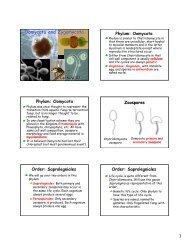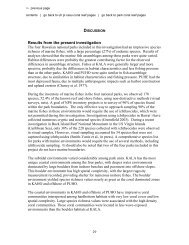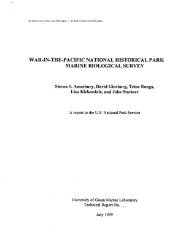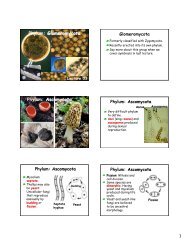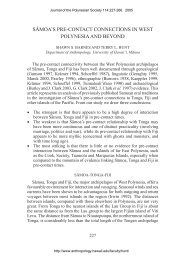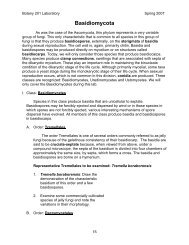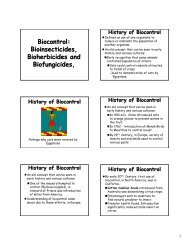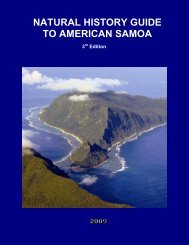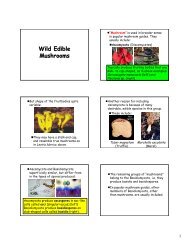american samoa - University of Hawaii at Manoa Botany Department
american samoa - University of Hawaii at Manoa Botany Department
american samoa - University of Hawaii at Manoa Botany Department
- No tags were found...
Create successful ePaper yourself
Turn your PDF publications into a flip-book with our unique Google optimized e-Paper software.
AQUATIC FISH AND INVERTEBRATESGeneralOn November 5, 1999, Charles Chong <strong>of</strong> the PPC field survey team made observ<strong>at</strong>ions <strong>of</strong>aqu<strong>at</strong>ic fish and invertebr<strong>at</strong>es along the 1,200-foot segment <strong>of</strong> Papa Stream. His observ<strong>at</strong>ionsare summarized in the following paragraphs.This segment <strong>of</strong> Papa Stream contained habit<strong>at</strong> th<strong>at</strong> primarily represented shallow riffle with acobble substr<strong>at</strong>a.At the upstream end <strong>of</strong> the stream segment,there is a small, concrete weir th<strong>at</strong> extendsacross the entire width <strong>of</strong> the stream bed(st<strong>at</strong>ion 11+80). In this loc<strong>at</strong>ion, there was aperiphyton complex <strong>of</strong> Cladophora andSpirogyra covering the rocks. The presence<strong>of</strong> Cladophora and Spirogyra was, in part, dueto the open canopy <strong>at</strong> this site. No solidwaste m<strong>at</strong>erial was observed.Downstream <strong>of</strong> the concrete dam structure, the stream was heavily polluted with householdgarbage. There was visual evidence th<strong>at</strong> this solid waste m<strong>at</strong>erial had been dumped by someresidents living adjacent to the stream.FishTwo species <strong>of</strong> Stiphodon and two species <strong>of</strong> Sicyopterus were abundant in Papa Stream.Kuhlia spp. were common, but no anguillids were observed during the survey. Althoughgobies were well represented, other macr<strong>of</strong>aunal organisms were absent.Invertebr<strong>at</strong>esMacrobrachium lar was the only crustacean documented in the stream. No neritids wereobserved along the stream segment. The lack <strong>of</strong> some species may have been due toelev<strong>at</strong>ional preferences <strong>of</strong> some organisms. Some organisms may be present <strong>at</strong> higherelev<strong>at</strong>ions <strong>of</strong> Papa Stream, Leele Stream, and Tauese Stream.There may be many factors th<strong>at</strong> favor gobies over other taxa in Papa Stream. Long-termmonitoring <strong>at</strong> various elev<strong>at</strong>ions is needed to explain the abundance and diversity <strong>of</strong> organismsin this stream.Rel<strong>at</strong>ive Abundance and Diversity <strong>of</strong> Fish and Invertebr<strong>at</strong>esA site specific summary <strong>of</strong> macr<strong>of</strong>aunal organisms observed during the survey are summarizedin Table 7-4. Genera are listed in order <strong>of</strong> descending abundance within their taxonomic group.TABLE 7-4SUMMARY OF MACROFAUNAL ORGANISMSOBSERVED ALONG PAPA STREAMStream Loc<strong>at</strong>ion Fishes Crustaceans MolluscsFormer Navy weir site(approxim<strong>at</strong>ely 1,180 feetupstream <strong>of</strong> Route 1 streamcrossing)Sicyopterus (2 spp.)Stiphodon (2 spp.)KuhliaMacrobrachium NoneAmerican Samoa Wetland/Stream Restor<strong>at</strong>ion and Enhancement PlanFebruary 2001, Papa Stream, Page 7-8



